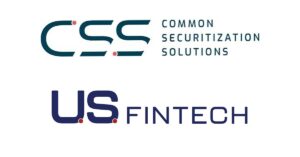Technology innovators throughout the mortgage industry share a common dream, that all the barriers holding back the profession will one day come tumbling down. The hope is that clunky processes and staffing shortages will be replaced by frictionless communications.
These modernized tech tools will be able to help lenders launch their performance skyward by eliminating one of their biggest hurdles — transparent and immutable access to every borrower’s financial history and the condition of every property that’s on the market. With the emergence of blockchain technology, this dream is already within reach.
Digital ledger
For anyone unfamiliar with it, a blockchain is a highly secure digital ledger of records and transactions, which are time stamped and unchangeable. Think of it as a decentralized source of truth that is available to everyone involved in a particular deal, without the need for any intermediation.
Nonagency and nonqualified (non-QM) credit providers may find blockchains to be especially valuable. These organizations, in particular, need a plethora of data points to underwrite loans for the many creditworthy borrowers who don’t qualify for government-backed mortgages.
In the mortgage world, if disclosing more data would enable consumers to reach their buying or selling goals, they might never think of it as a trade-off.
Indeed, lenders are starting to connect to blockchain platforms to review and update loan transactions. If the mortgage industry eventually migrates to these ecosystems, imagine the time and money that also could be saved by knowing that title searches are complete, valuation reports are done, required documentation is finalized and loans are clear to close. Blockchains may well house all of this content.
What’s even more exciting is that there is a way to ratchet up this model to another level, which could fundamentally change and improve how homes are bought and sold. This will offer new business-growth opportunities for traditional and non-QM lenders alike.
Consumer interest
Picture the near future where the financial credentials of homebuyers and sellers, as well as property data, are put together and made available on demand through a blockchain for every transaction in which they’re involved. In this scenario, each consumer could have their own digital token or fingerprint ready for anyone who needs it.
Would consumers resist the compilation and disclosure of this information? In an ideal world, they would actually pursue it. They would know that this high-value content could raise their prospects for landing the home of their dreams — or help them sell their home faster and for more money.
This future vision of the home-purchase transaction is a natural extension of the exploding subscription-service market,
which was estimated to exceed $28 billion in the U.S. last year. Consumers who subscribe to Netflix or Amazon Prime, for example, know that by sharing information about themselves and their preferences, they gain access to products and services tailored just for them.
In the mortgage world, if disclosing more data would enable consumers to reach their buying or selling goals, they might never think of it as a trade-off. Instead of losing privacy, they’d be gaining an advantage by enticing lenders, servicers or investors with their information, thus putting themselves in the driver’s seat.
How would this process work? Mortgage applicants would put complete, verifiable data about everything — from their employment history to their assets — into this secure token and then provide a digital path to it using a blockchain. This would make it quick and easy for mortgage lenders to originate and configure the right financial products for them. Sellers, too, could follow a similar process by creating an immutable data pack that certifies the exact condition of their home.
Shared insights
The fun really begins when the blockchain expands to include real estate agents, mortgage originators, lenders and servicers. Consider the following hypothetical scenario.
A couple has looked at two similar homes on the same street, but one of the sellers has certified their property’s pristine condition (no lead paint, asbestos, etc.) with a token while the other has not. With two young children, the couple wants to get into their home before school starts and is willing to forgo an inspection report. Seeing the seller’s data pack with proof of the home’s condition on the blockchain, the buyers not only make an immediate offer but one above asking price. The seller quickly accepts.
Originators can spring into action at this point, competing for the buyer’s business based on the financial details they have shared. With the borrower’s credentials in place, the winning lender can immediately start underwriting the loan. Because they have early insights about the asset, the lender can make a preliminary decision about holding the loan or eventually selling it to a servicer that also is able to quickly evaluate it. And because the closing process is streamlined, the loan will start performing right away.
Speed and efficiency would not be the only advantages in a scenario like this. In many cases, a blockchain would facilitate so-called “appliance to appliance” communications between devices or nodes. This digitization would take personality out of the equation and leave no room for bias in the lending decision.
Potential market
For non-QM lenders, blockchain technology aligns with their personal, flexible, responsible and pro-borrower approach. Indeed, the current renaissance of the non-QM lending business is based on the ability of these lenders to advocate for nontraditional borrowers.
Non-QM lending involves precise choreography to create mortgages with progressive terms (such as loan-to-value ratios up to 90%) that also follow an extremely rigorous underwriting process. Tech tools —from predictive analytics to pricing engines — have always been critical to this consumer-oriented strategy. Blockchains would elevate the value of these systems. If new federal or state regulations drove even more borrowers to non-QM lenders, originators and underwriters would be able to welcome these clients with open arms and manufacture loans that met their exact needs.
An increase in the potential non-QM home-purchase market is already happening
through the rise in self-employment. Take, for instance, a newly self-employed borrower who started a landscaping business. Their cash flow dropped during the winter but spiked during the spring and summer months. Using a blockchain for credentialing purposes, a non-QM lender would be able to originate a mortgage product that the borrower could handle as their liquidity ebbed and flowed. Investors, meanwhile, would have assurances that any loans made through the blockchain were based on the most current and accurate datasets available.
● ● ●
Imagine that everyone in the mortgage process was a dream to work with — from the buyers and sellers who were transparent with their information to the lenders that eschewed bureaucracy in favor of empathic, personal service. Blockchains would allow them to work and grow together while resting easy at night. ●
-
John Keratsis is president and CEO of Deephaven Mortgage, a leading provider of nonagency and non-QM loans. Deephaven was founded in 2012, and offers its products through a nationwide network of independent mortgage brokers and correspondent lenders. Keratsis joined the company in 2021. Previously, he was CEO at Boston National Title Agency and senior managing director at Incenter, Boston National’s parent company. Visit deephavenmortgage.com. Reach Keratsis at jkeratsis@deephavenmortgage.com.
View all posts








